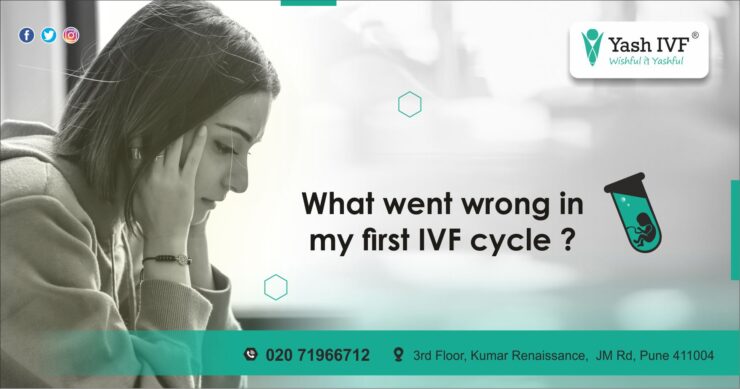My good-quality eggs were fertilized with the most capable sperm and still the cycle failed.
Don’t be shocked or despondent. The fact is that 60% of all IVF cycles often don’t result in pregnancies. In the natural cycle too, the fecundity rate is 20-25%. Fecundity is simply a measure of fertility. It says about the ability to produce offspring or the next generation.
What is the issue that caused IVF failure? Is it about the egg, sperm, uterus, clinic, or treatment protocol? Treatment and outcome of infertility treatment is truly a roller coaster ride.
As Healthy seeds need fertile soil to grow, so does the process of implantation of a Healthy embryo.
One of the most critical factors for a successful implantation leading to pregnancy and full term healthy baby is the quality of the woman’s endometrium.
Unique Things about Human Endometrium:
The human endometrium is a highly regenerative tissue. Receptive endometrium is necessary for the process of implantation. The human endometrium is a highly dynamic tissue that undergoes approximately 300-350 menstrual cycles during a woman’s lifetime. This endometrial tissue regeneration is comparable to the epidermis, gut epithelium, and bone marrow with high cellular turnover.
The inner lining of the uterus is endometrium and it responds to the hormones Estrogen & Progesterone. Sometimes, the endometrial lining is abnormally thick or thin, which affects the process of pregnancy and can cause irregular bleeding.
The real question is, we have mastered the art of IVF & still the worldwide success rate of IVF is around 40-50%. Endometrial thickness plays a huge role in implantation and is the least understood one. The success of IVF is partly dependent on endometrial thickness.
The body prepares the endometrium each month to host an embryo. The best cushioning for the embryo is Endometrium thickness during menstruation. If the egg is not fertilized, this cushioning is shredded. During this process, the endometrial thickness varies in thickness.
Two major hormones, estrogen and progesterone are responsible for these changes in the endometrial lining. The normal thickness of the endometrium changes throughout a woman’s life, right from childhood, sexual maturity, and reproductive years to menopause and thereafter.
Endometrial preparation plays the main role in IVF treatments, especially during donor eggs or in Frozen Embryo Transfers (FETs). This step involves the administration of hormonal medications to increase the chances of embryo implantation or getting pregnant.
Why is endometrial preparation so important?
The endometrial or uterine lining is kickstarted and starts at the beginning of a new pregnancy. The uterine lining is made up of vascular tissues with a good blood supply.
In a natural pregnancy, the body designs endometrial thickness throughout the menstrual cycle and it goes through two growth phases.
In the proliferative stage: (From the beginning of the cycle until day 14 till ovulation occurs) estrogen-driven endometrium thickness is around 10 mm at this stage.
Luteal phase: This second phase begins on day 15 of the cycle until the end, progesterone driven, the number and size of endometrial glands increase. If no embryo attaches to the endometrium, it sheds and menstrual begins, which means that a new cycle begins.
In natural cycles, the endometrial lining is been taken care of & during IVF Cycle, endometrial thickness needs to prepared by using hormone injections. It is the rate-limiting step for IVF success.
What is the optimal endometrium thickness for pregnancy?
As we know, both embryo quality and endometrial thickness are key factors for pregnancy.
In general, 7-10 mm of endometrial thickness is considered good for embryo implantation. An endometrial thickness below 6 mm is associated with implantation failure.
The pattern observed in ultrasounds is examined and only when, a triple line pattern is visible, we can consider there is a good chance of achieving pregnancy. But generally, each case should be examined individually.
Which other factors influence embryo implantation?
Aside from thickness and appearance, Embryo quality, endometrial receptivity, and fluid communication between the endometrium and the embryo are essential. despite this, predicting implantation outcomes is not easy, as several factors are involved. For this reason, the best practice is to individualize each case to predict the outcome.
High-quality embryos have a high potential for pregnancy. Endometrial receptivity for ovum pickup is necessary. Embryo-endometrial synchrony means the endometrial development and endometrial receptivity days are of the same timings.
For example, let’s imagine we have a blastocyst embryo (day 5 of development) of optimal quality that is put into a uterus but the endometrium is not receptive. Implantation would be highly unlikely.
Does endometrial lining be improved with oral pills?
Yes. Contrary to the medications often used for certain ovarian stimulation, endometrial preparation is quite possible with oral medication. A thickness of a minimum of 7mm is a must for pregnancy.
What is the ideal endometrial thickness for IVF?
An endometrial thickness of 7–12 mm is the optimal requirement for a positive IVF outcome.
Are there any signs of thin endometrium?
Some symptoms of thin endometrium which are often taken casually occur much before, she tries to conceive. Women with thin endometrial linings often have multiple IVF rounds to achieve pregnancy. Some tentative signs are, Abnormal periods, Painful periods or cramps, Trouble carrying a fetus to full-term.
A thin uterine lining is not a permanent scenario. There are various natural ways to improve the endometrial lining.
Causes of thin endometrium include:
Estrogen deficiency in the body, poor blood circulation to the uterus, uterine fibroids and Adhesions caused by trauma or infection, Chronic endometritis may cause thin endometrium.
How Is Endometrial Thickness Measured?
The most common method used is ultrasound, particularly if an individual goes to them with abnormal vaginal bleeding. When ultrasound does not suit, MRI is recommended.
What are the ways endometrial thickness can be improved?
1. Estrogen supplements under physicians guidance
2. Focus on blood flow, especially of the uterus.
3. Exercise regularly and limit substances like caffeine and nicotine.
IVF is demanding, so reaching optimal endometrial thickness is very important. If the uterine lining isn’t reaching the ideal thickness, that doesn’t mean that pregnancy is impossible. If you are concerned about a thin uterine lining, do talk to us.
We at Yash IVF have offered a ray of parenthood with thin endometrium. There are many treatment options available.








Add comment